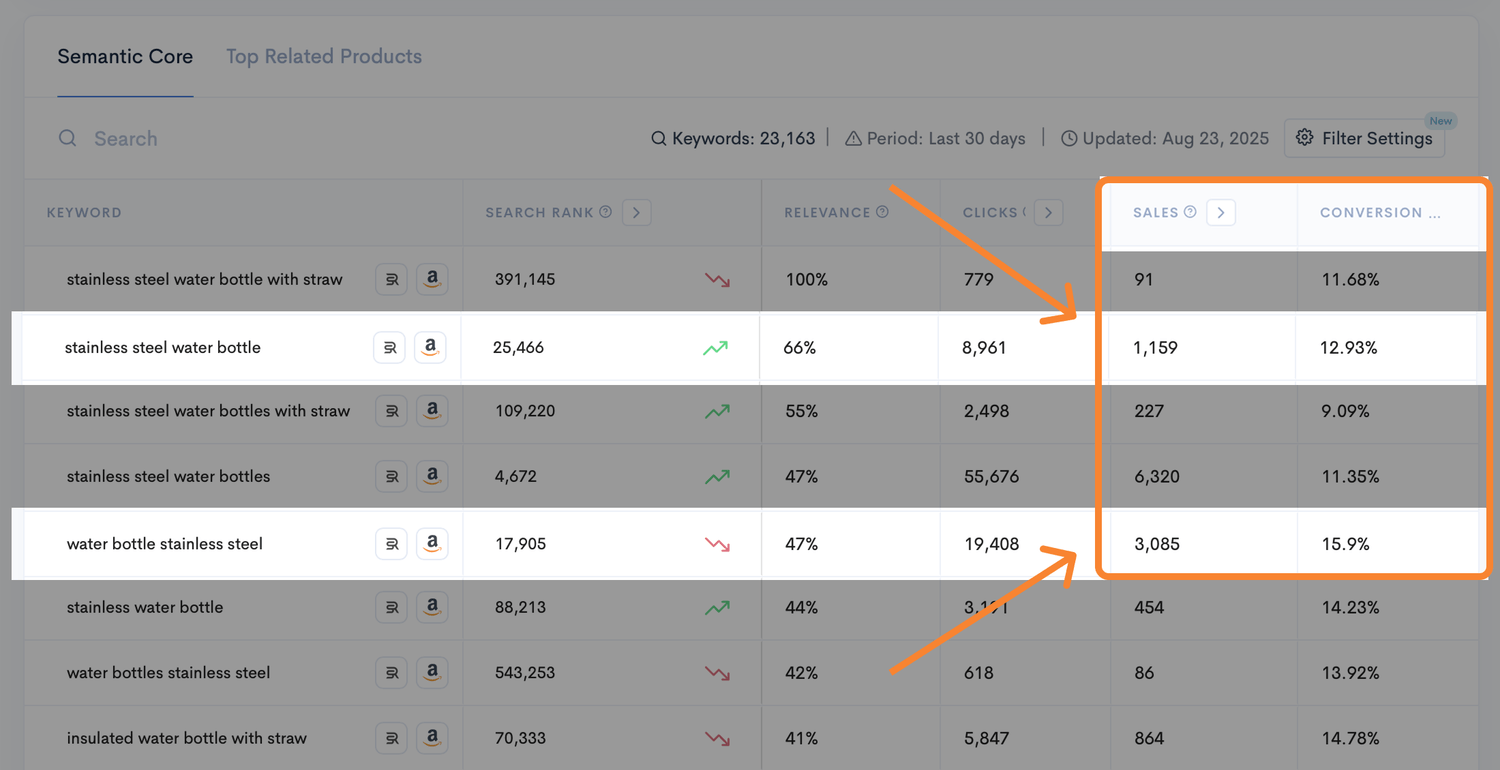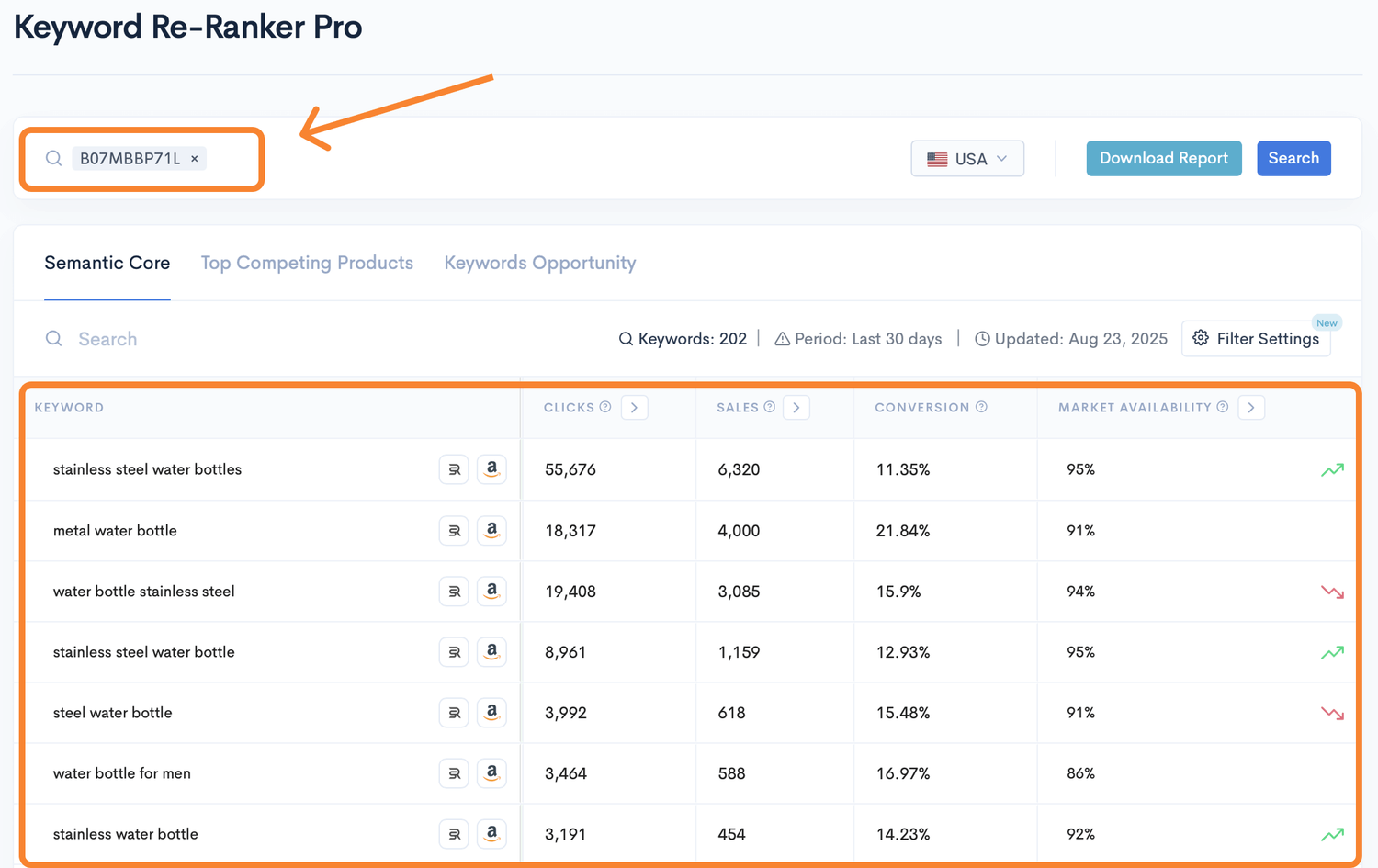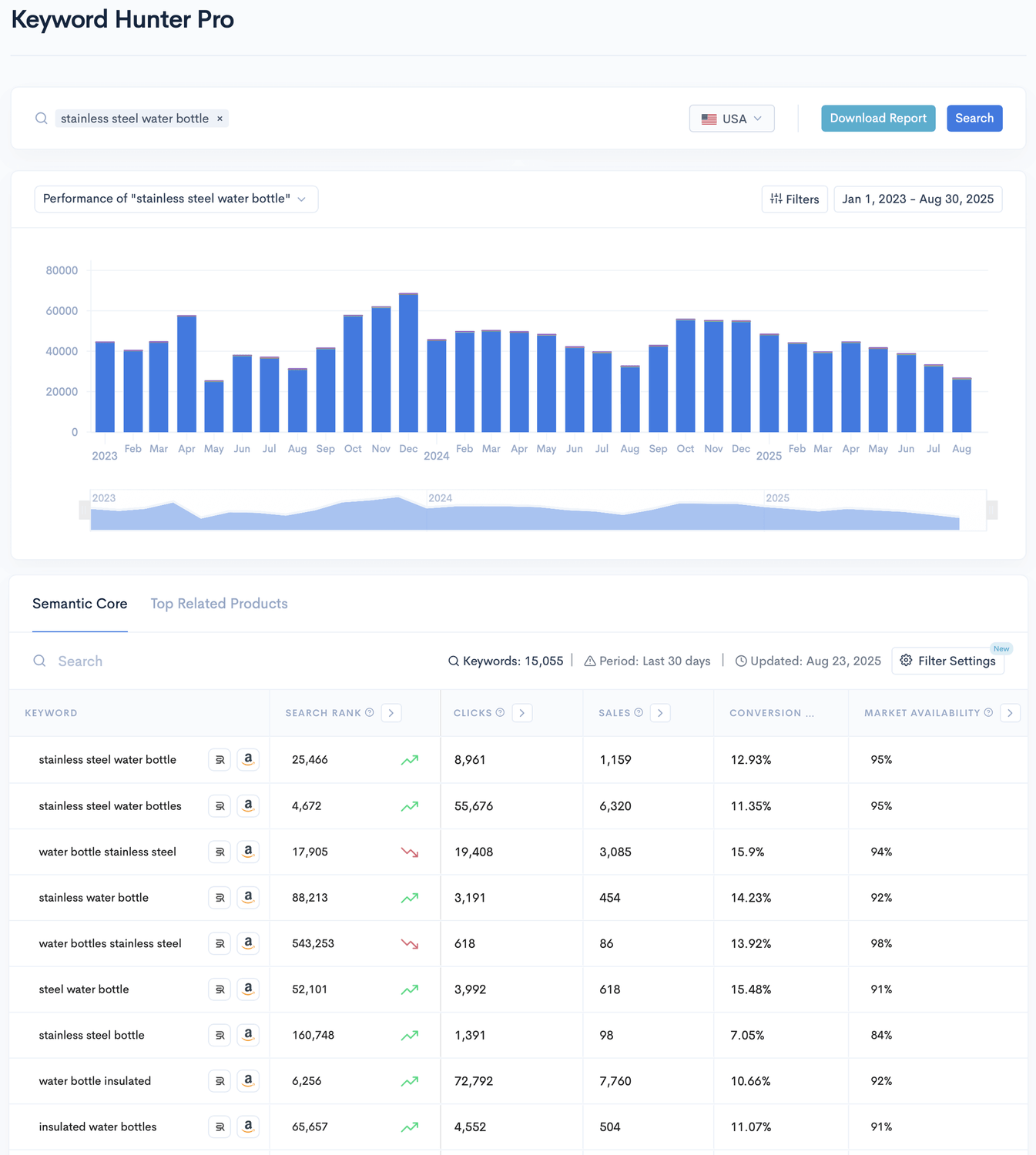intelliRANK Blog
Keyword Strategy that Helps Sellers Rank Higher on Amazon in 2025
Get the FREE 4-step Strategy Plan eBook
that will help you Increase your Amazon Sales immediately...
Statista reports that there are now over 9.7 million active sellers on Amazon, with third-party sellers accounting for nearly 60% of all sales.
In 2025, that means you’re not just listing a product—you’re competing against millions of rivals, rising ad costs, and smarter algorithms, all fighting for the same top spots.
Recent studies also show that the first three organic results capture more than 70% of clicks. If your product slips to page 2 or beyond, visibility drops to almost zero.
That’s why relying only on broad, high-volume keywords often leads to frustration. These terms are already dominated by big brands with deep pockets. The smarter path in 2025 is to uncover “hidden gold” keywords that help you rank higher on Amazon faster.
In this guide, we’ll explore what hidden gold keywords are and how to weave them into your listings and PPC campaigns.
What are Hidden Gold Keywords
Hidden gold keywords are the specific, purchase-ready phrases shoppers type into Amazon. Broad, generic terms can bring you a flood of traffic, but little clarity or conversion. Hidden gold keywords, on the other hand, zoom in on intent. They don’t just describe a category—they describe a buyer’s exact need.
For example:
Broad keyword: “stainless steel water bottle” (millions of searches, fierce competition)
Hidden gold keyword: “water bottle stainless steel” (only changes in the word sequence, but much higher sales and conversion rate)

What sets hidden gold keywords apart?
Low Competition: Few sellers are bidding on them, so it’s easier to break onto Page 1
High Intent and conversion-friendly: Shoppers using these phrases are ready to buy
Niche Relevant: The keyword closely matches your product’s features or target audience
These keywords are typically:
Long-tail: 3–5 words or more, highly specific.
Overlooked: Because they don’t generate massive sales volumes, many sellers skip them, leaving the field wide open.
Research backs this up. Long-tail keywords account for about 70% of all online searches. On Amazon, they’re even more powerful because the platform is a buying destination, not just a place to browse.
Why Hidden Gold Keywords Help You Rank Faster
Amazon’s A9 algorithm isn’t impressed by sheer traffic. It is built to reward sales velocity and conversion rates. That means if you can show Amazon that people searching for a term buy your product, you’ll rise in rankings faster. Hidden gold keywords give you the perfect environment to do that.
Here are all the reasons why:
Lower Thresholds to Rank
Competing for a broad keyword like “gaming chair” might require thousands of sales to even touch Page 1. But for a niche keyword such as “ergonomic gaming chair with footrest for tall people,” 25–50 monthly sales may be enough to climb the rankings quickly.
Higher buyer intent
We’ve already mentioned that hidden gold keywords carry higher intent, but it’s worth spelling out why that matters. A shopper typing “running shoes” might just be exploring different options. But someone searching “women’s lightweight running shoes for flat feet” knows exactly what they need and is ready to buy.
That’s why hidden gold keywords often move your listings up faster. They match the buyer’s intent more precisely, and Amazon rewards that relevance.
Cheaper PPC costs
Advertising wars usually drive CPCs on generic terms sky-high. Hidden gold keywords are often 30–40% cheaper per click. That makes PPC campaigns not just affordable, but profitable faster.
Compounding effect
Each conversion strengthens your sales history, reviews, and ranking signals. Wins from hidden gold keywords ripple outward. They eventually help you gain traction even on broader terms.
How to Identify Hidden Gold Keywords Using Real Data
Finding hidden gold keywords requires you to interpret real buyer behavior and sales data. The more precise your process, the easier it becomes to separate words that sound good from those that actually drive conversions.
Here’s a step-by-step framework you can follow:
Step 1: Start with Seed Keywords
Begin with the most obvious search terms that describe your product. These are usually short, generic phrases.
If you sell yoga mats, your seed list might look like:
“yoga mat”
“non-slip yoga mat”
“eco-friendly yoga mat”
Seed keywords give you a base to build from, but they’re often too broad to help you rank quickly. The real value comes from expanding them into long-tail, hidden gold terms.
Step 2: Expand the List
Now it’s time to dig deeper. You can use:
Amazon auto-suggest: Begin typing your seed keyword into the Amazon search bar and note the suggested completions. These are pulled directly from real shopper searches. For “yoga mat,” you might see “yoga mat for bad knees” or “yoga mat with carrying strap.”
Competitor listings: Scan titles, bullets, and product descriptions. Established sellers often (unintentionally) reveal the keywords driving their traffic.

Customer reviews: Pay close attention to repeated words or phrases. If reviewers constantly mention “easy to clean” or “extra thick,” those are strong keyword candidates.
Step 3: Apply Smart Filters
At this stage, you’ll likely have dozens, maybe even hundreds, of potential keywords. Not all of them are worth your time. Here’s how to filter out the noise:
Sales volume: Keep only those with at least 25–100 monthly sales. This shows active demand.
Conversion rate: Aim for terms with 12–20% or higher. A keyword that brings clicks but not purchases won’t help you rank.
Relevance: Make sure the keyword directly matches your product. A phrase like “kids yoga mat with cartoon print” won’t help if you only sell plain adult mats.
Step 4: Validate on Amazon
Data can look good on paper, but the real test is Amazon’s search results. Search each keyword directly:
If Page 1 is filled with irrelevant, low-quality, or inconsistent listings, you’ve found an opening.
If it’s dominated by well-optimized, big-brand products, that keyword may be too competitive.
This step ensures your shortlist is both data-backed and grounded in real marketplace conditions.
Step 5: Keep a Shortlist
Compile a clean shortlist of hidden gold keywords using a simple spreadsheet. Include columns for the keyword, sales volume, conversion rate, and notes about relevance.
This becomes your working list for listing optimization and PPC campaigns. Remember to review it regularly. Buyer behavior changes and new opportunities appear all the time.
Step-by-Step Optimization Tips
Once you have your shortlist, the next step is implementation. Here’s how to maximize impact:
Titles
Place 1–2 hidden gold keywords at the front.
Bullet Points
Naturally work in 2–3 keywords.
Focus on benefits, not just features: “Extra cushioning provides joint protection during yoga or pilates.”
Product Description
Blend in keyword variations while keeping it narrative-driven.
Example: Instead of repeating “non-slip yoga mat” five times, describe how the “textured non-slip surface” keeps the mat in place.
Backend Search Terms
Use all 249 characters Amazon allows.
Add misspellings, regional phrases, and variations that don’t fit naturally in copy.
PPC Campaigns
Create ad groups dedicated to hidden gold keywords.
Start bids low, monitor performance, scale winners.
Use negative keywords to cut wasted spend.
Using Sellerise Keyword Hunter to Streamline the Process
So far, we’ve looked at how to manually uncover and apply hidden gold keywords. The method works, but it can take a lot of time and effort.
If your goal is to rank higher on Amazon in 2025, you’ll want a faster, data-driven way to find those conversion-ready search terms. That’s exactly where Sellerise Keyword Hunter Pro comes in, helping you cut through the noise and focus only on the keywords that matter.
How it Works
Enter a seed keyword: Instantly generate thousands of related terms.
Filter the results: By conversion rate, sales volume, competition, and relevance.
Cut the noise: Remove branded or irrelevant keywords.
Spot long-tail gems: Use filters (like 4+ word count) to uncover hidden gold phrases.

Why it Matters
You’re basing your keyword list on real sales and conversion data.
Instead of sifting through 10,000 keywords, you get a curated shortlist.
Competitor ASIN analysis shows what others are ranking for—letting you find gaps.
You can then track progress with the Sellerise Keyword Tracker, watching your listings climb the ranks in real time.
© Copyright 2025 - intelliRANK.info - All rights reserved. Terms of Service. Cookie Declaration.










